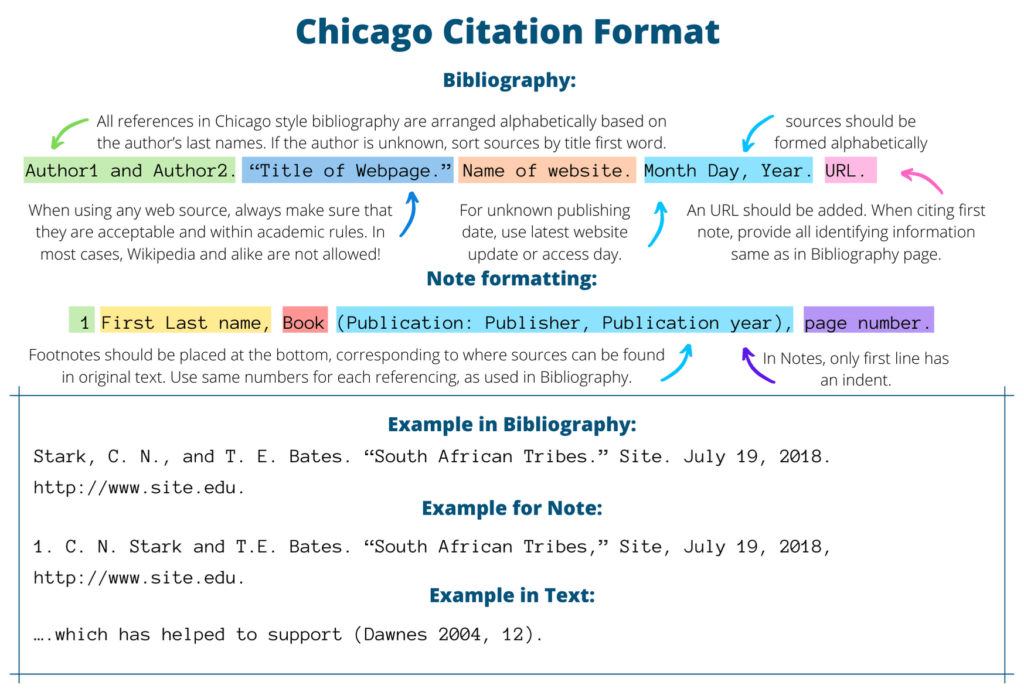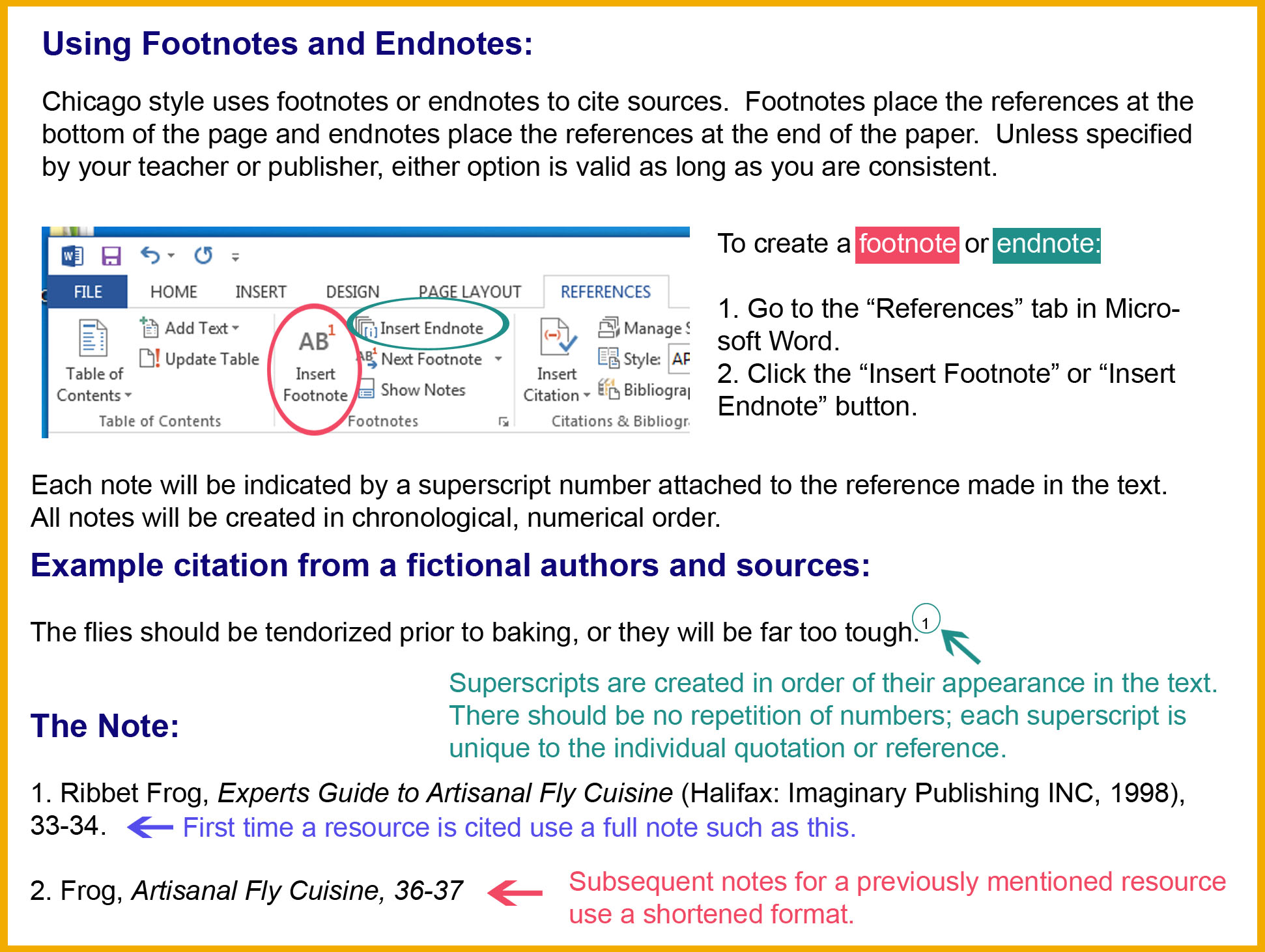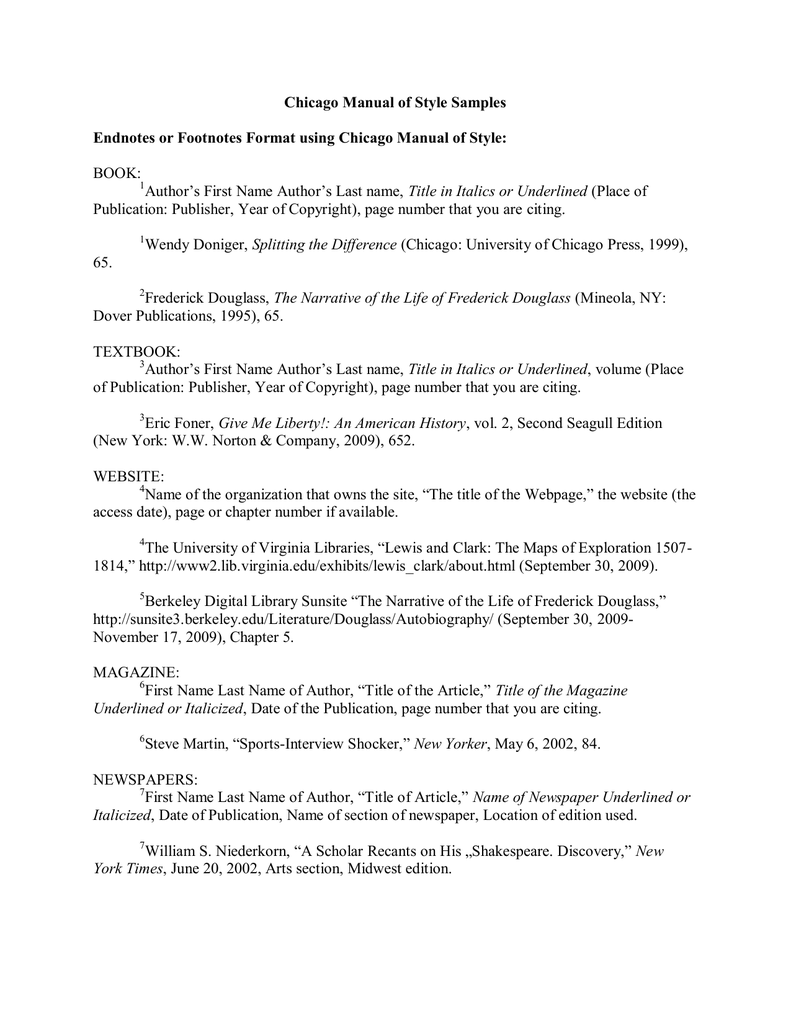

However, information that is considered common knowledge within a discipline does not need a footnote. information or numerical data that is not common knowledge.ĩ.7 million soldiers were killed during World War I.someone else's ideas or arguments that you have paraphrased or summarized.

When to Include a Footnote/Endnote When You Have Used Your Own Words, Use a Footnote/Endnote to Cite: The guidelines for this style are published in the 17th edition of The Chicago Manual of Style: The Essential Guide for Writers, Editors, and Publishers (University of Chicago Press, 2017). Check with your professor to see what he or she prefers. Many professors prefer that you use footnotes rather than endnotes. With few exceptions, you should use either footnotes or endnotes in your paper, not both. Footnotes and endnotes require you to include detailed information about each source as you cite it.

Sometimes called “Chicago Style,” footnotes and endnotes are different from in-text citation methods (such as APA or MLA). What is Chicago Style (footnoting or endnoting)?


 0 kommentar(er)
0 kommentar(er)
